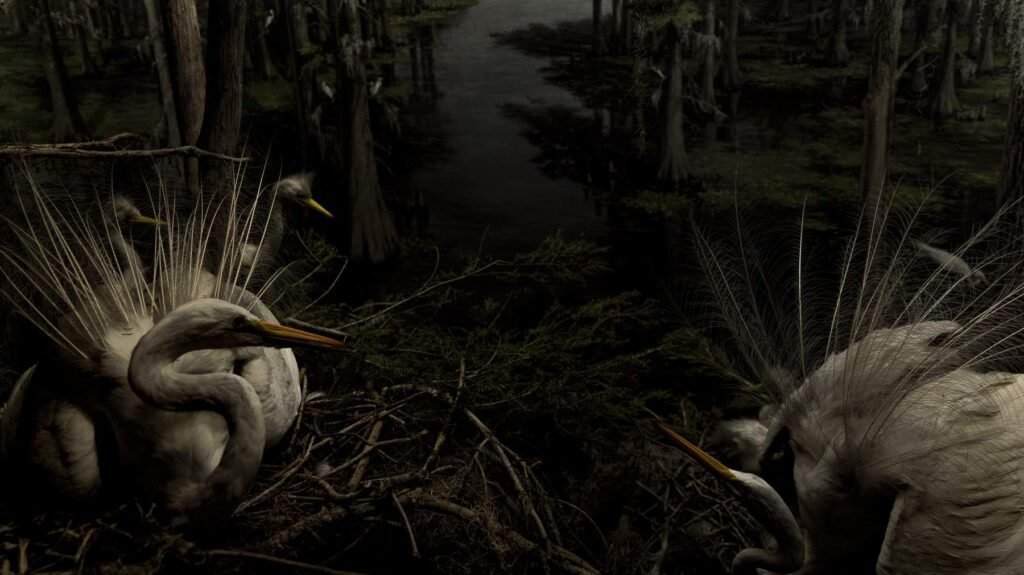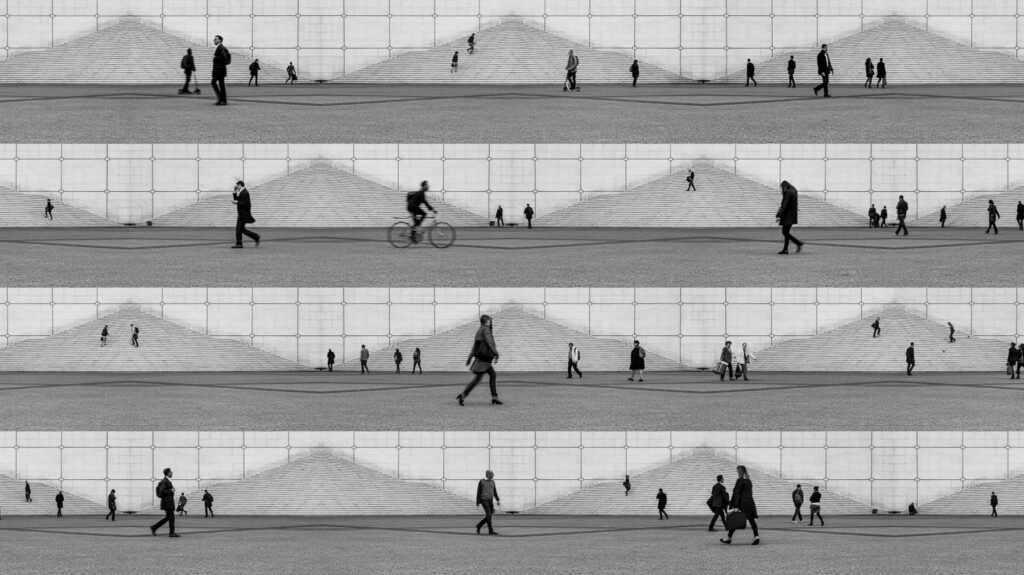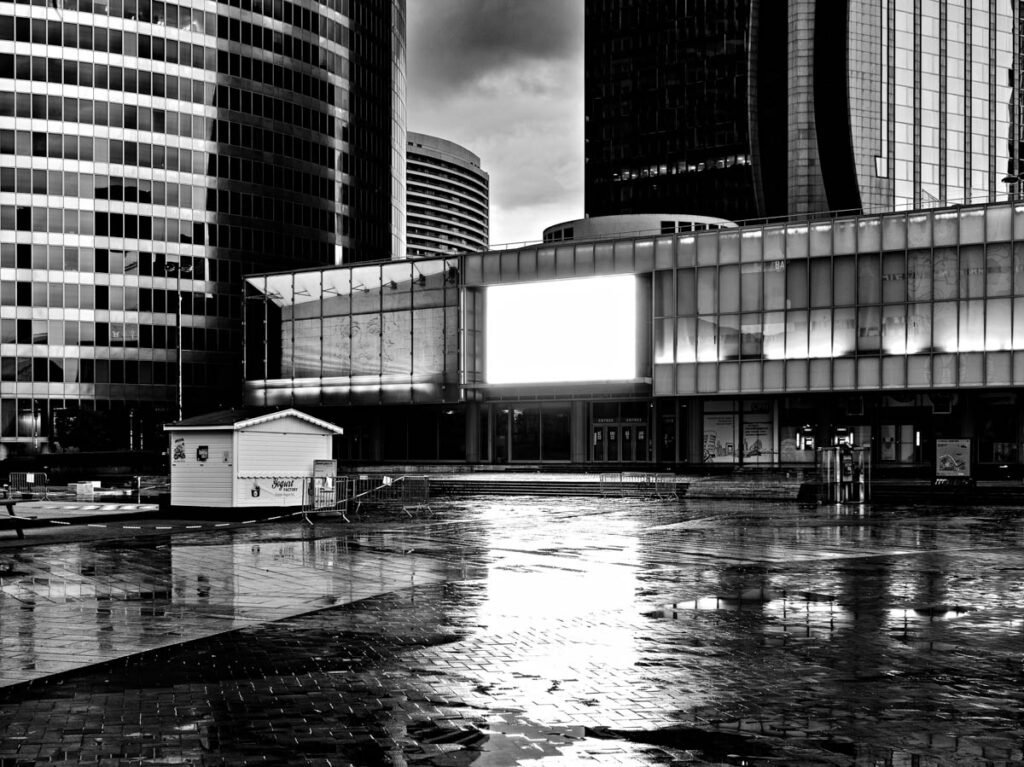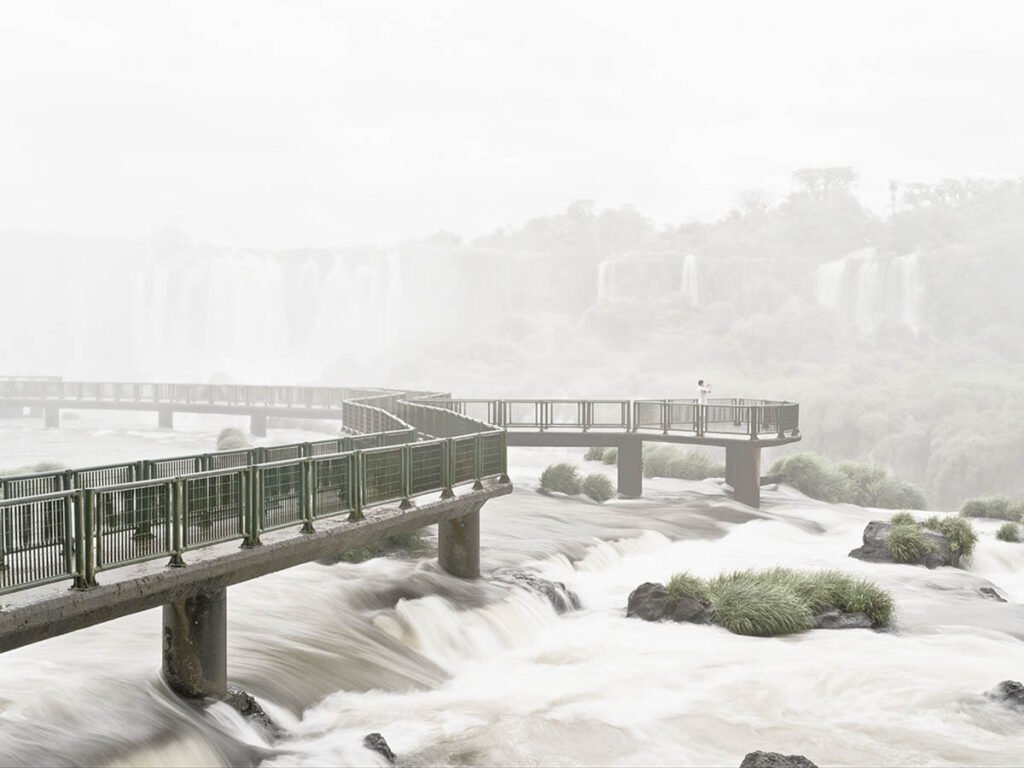What still exists?
The photographic series that makes up the exhibition Hominini by Lucas Lenci presents us with multiple possibilities of interpretation. On one level, we can immediately perceive distinct worlds, scattered across the landscape—whether urban, interior, or natural. These landscapes necessarily include human beings, and they speak to us of silent, solitary universes, even when the individuals are captured in groups. When alone, as the protagonists of the frames, these figures evoke a sense of melancholy, which grows in our already unsettled gaze, due to the psychological impact that these anonymous figures emanate. This impact and unease are reminiscent of the images in Lars Von Trier’s Melancholia (2011).
In these images, Lenci presents over fourteen more photos that open up two additional layers of meaning. In the first layer, the artist reveals his references within the history of photography and art: we can sense his keen attention to influential modern artistic works, such as the photography of Harry Gruyaert or the painting of Edward Hopper (1882-1967). From Gruyaert, the artist brings us the interplay of light and shadow, the twilight and chiaroscuro, which sometimes emit dramatic, artificial light. From Hopper, we clearly perceive the sense of space and emptiness, the silences, and the solitude of the human condition.
In the second layer, we observe his connection to contemporary photography and art. Men, women, the elderly, children—whether alone or in groups—reveal the voyeuristic gaze of the photographer, which might remind us of the intimate, stolen snapshots from Nan Goldin’s lens. Alternatively, it invites us on a journey through unfathomable, desolate spaces, into the trajectory of the vulnerable solitary wanderer—silent, yet still existing, resisting, and multiplying in the absurdity of today’s world.
In biology, Hominini refers to human evolution, the preservation of the species, the opposite of extinction, to what is still in existence. This is what Lenci’s images address: they draw our attention to life and subjectivity in our times, to what still exists.
Daniela Bousso
O que ainda existe?
A série fotográfica que compõe a exposição “Hominini”, de Lucas Lenci, nos coloca diante de múltiplas possibilidades de leitura. Em um primeiro nível, podemos logo apreender mundos distintos, constelados no território das paisagens. Sejam elas urbanas, de interiores ou naturais, elas incluem necessariamente os seres humanos e nos falam de universos silentes e solitários, mesmo que estes homens, por vezes, sejam captados coletivamente. Quando sós, ao protagonizarem os frames, estes seres nos dão a sensação de melancolia; esta cresce aos nossos olhos já inquietos, diante do impacto psicológico que as figuras anônimas emanam. Impacto este e inquietação que encontramos também nas imagens do filme Melancholia (2011), de Lars Von Trier.
Nestas imagens, Lenci apresenta mais quatorze fotos que abrem outras duas camadas de leitura. Na primeira camada, o artista revela as suas referências na história da fotografia e da arte: podemos perceber o seu olhar atento a produções artísticas instigantes da arte moderna, como por exemplo a fotografia de Harry Gruyaert, ou a pintura de Edward Hopper (1882-1967). Do primeiro, o artista traz os jogos de luz e sombras, as penumbras e os claro-escuros, que por vezes emanam luminosidades dramáticas e artificiais. Do segundo, transparecem nitidamente o senso de espacialidade e o vazio, os silêncios e a solitude humana.
Já na segunda camada de leitura, percebemos a sua relação com a fotografia e com a arte contemporânea. Homens, mulheres, velhos, crianças, a sós ou em coletivos, revelam um olhar voyeurístico do fotógrafo, que pode nos fazer lembrar das capturas e dos instantâneos roubados e intimistas das lentes de Nan Goldin, por exemplo. Ou, por fim, que pode nos propor um mergulho, uma viagem por espaços insondáveis e desolados, na trajetória de vulnerabilidade do caminhante solitário, silencioso, mas que ainda existe, resiste e se multiplica no absurdo ambiente da atualidade.
Na biologia, Hominini refere-se à evolução humana, à preservação da espécie, ao oposto do extinto, ao que ainda está em existência. É disto que tratam estas imagens de Lenci, que nos chamam a atenção por referirem-se à vida e à subjetividade nos nossos dias, ao que ainda existe.
Daniela Bousso





